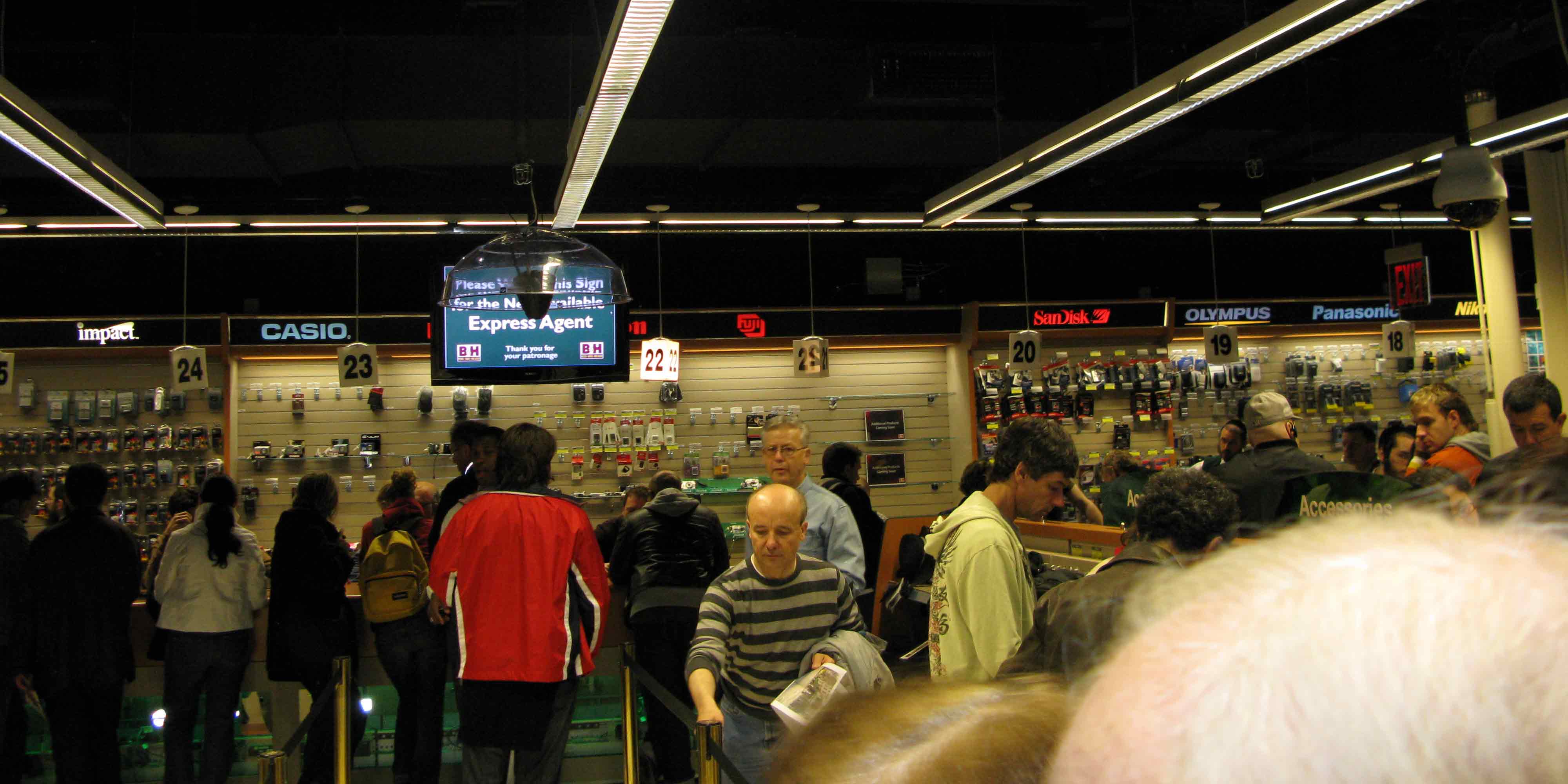Sales Activation – Put The Money Where The Mouth Is!
Sales activation at the point-of-purchase is without doubt one of the most important part of every business success. Sales activation leverages every consumer touch point interacting with the brands and the marketing programs that triggers the consumer to buy at the point-of-purchase, over and over again.
Creativity is important, –marketers can buy brand advertising creativeness from the advertising agencies but they cannot easily buy unified market activation programs at the point-of-purchase. The best-in-class companies have all learned to empower the point-of-purchase as a part of making their customer experience, unique, special and different. Among these successful triumph companies are Singapore Airlines, Apple, Louis Witton, McDonalds, Wall Mart, Starbucks, P&G, Coca-Cola and many more –and it is not a surprise they have all become market leaders.
Marketing is not solely about building brand awareness and setup price promotions to build a brand future. Far too many companies have still not figured out the value of focusing at the point-of-purchase being the center place to create competitive advantages.
The main reasons marketers do not focus at the point-of-purchase are considered:
- The knowledge of the power of operational marketing does not exist.
- Marketers do not recognize the enormous value of planning in detail all the touch points associated with planning the brand product interaction at the point-of-purchase.
- Lack of collaboration between sales, services and marketing.
- Difficult to fill the skills gap and build knowledge of integrated marketing excellence.
- Management is not leading by example by spending majority of their time at the point-of-purchase visiting the marketplace studying and learning what competition knows about their business.
- Sales, services and marketing operate in a silo system which is often the core reason operational marketing cannot be developed more effectively.
The marketing position must be extended to new heights where competitive advantages are created trough integration of the whole sales, services and marketing process. Integrated marketing system leverages the whole organization to facilitate the entire brand concept in the whole market harmonizing every touch point the consumers interact with the company products –and it is about attracting the desired attention at the point-of-purchase.
Activate impulse purchases
Selling more to each consumer through activating impulses purchases require superior planning and must be executed in the greatest detail to work effectively.
During my travels I always try spend part of the time to study what the competitors know about their business and study how proactively they execute their business strategies at the point-of-purchase. There are so many opportunities associated with activating the point-of purchase. Activations can be discovered by “walking the talk” trying to discover how various marketing programs are executed between different companies.
 The B&H Store on Ninth Avenue: The shoppers can touch and try the equipment and get answers to technical questions about the equipment they want to buy. The service activities; touch and try, make order, pay for goods and pick up goods are all separate processes and integrated with the service system design.
The B&H Store on Ninth Avenue: The shoppers can touch and try the equipment and get answers to technical questions about the equipment they want to buy. The service activities; touch and try, make order, pay for goods and pick up goods are all separate processes and integrated with the service system design.
One time I was traveling in New-York I wanted to buy a new camera and visited B&H on Ninth Avenue, the worlds leading retailer store of imaging products. B&H has been on the market for more than 35 years and earned the trust of their consumers and customers. They offer very competitive pricing and as a part of their company profile they are determined to combine honest and helpful dealings with outstanding service before, during and after the sale. All professional and amateur photographers know B&H for their reasonable pricing, outstanding services and their extensive inventory availability of imaging products. Their stock keeping units consists of more than 170,000 items for sale every day.
It is quite spectacular experience to visit their store. I spent quite good time to study the store layout and their service systems at the same time I talked to few store clerks to gather inside information about B&H. I was told there are between 350 and 400 employees that work in the store on a regular basis. There are between 8 and 9 thousand visitors that visit B&H every day and about 75 percent of them buy something from the store.
The outlet layout and the service systems are designed to service the huge traffic to the store as effectively and effectively as possible. The store is divided into four main service sections and the service systems are assigned accordingly to these sections. The first section is where shoppers can visualize, touch and try the equipment they are interested in buying. While looking at the equipment the shopper has easy access to a dependable service assistant that answers all questions about the equipment. When the shoppers have decided what to buy they walk to the sales registration desk and tell the sales agent what they want to buy.
The sales slip is generated and the shoppers walk to the cashier in the third section with the slip to pay for the goods they bought. After paying for the goods the consumer receive an invoice and walk straight to the fourth section where they can pick up the goods they bought –ready waiting for them upon arrival. B&H structure and in outlet systems are quite extraordinary and it is worth visiting the store to visualize and experience their services system design.
Anyway, I visited the store with a colleague of mine and we both wanted to buy new cameras and knew that B&H offers the best prices. After studying the cameras in the store we decided to buy the same type of camera and walked to the sales registration desk and gave the sales agent the name of the camera we wanted to buy. When you buy a new camera you generally need to buy accessories with the camera for instance; memory card, protection case and sometimes a lens. In many sales environments this is the impulse purchase activation point where the sales clerk can influence what is being bought –sell more to each consumer program. I asked the sales agent about the biggest size of memory card for the camera. The salesman approached and said we have standard packages with this camera for 107 U$D and it includes leather bag, two 2 GB memory cards, extra battery and 3-year service contract. The insurance covers everything except if the camera is stolen or lost and if you drop it in the bath tub you will get a new one. I asked the clerk, what is the value of this package? He replied; I do not know exactly and he browsed on his computer and said the insurance itself is just valued at 13 U$D. I became aware of it would take time to summarize the prices to find the value of the offer –so I asked him to skip it. My colleague bought the recommended standard kit with the camera and I bought with the camera what I believe would be best to buy with such a camera. The following figure summarizes the unalike purchases of accessories we bought with the camera.
Business is business –it is all about detail! Even the invoice did not allow me to see the price of each item bought with the standard kit. You can only see the quantities bought and one total price, why? Additional-selling is a well known sales concept and it is practiced world wide. Figuring out a way how it is possible to sell more to each customer is well worth studying in detail if you want to stay in business over the long-term. It can be a matter of success and failure for a store.

The table above is comparing the standard kit and my own choice price difference. The standard kit invoice showed the quantity bought and total price of U$D 326,95. Therefore, to find each unit price it was necessary to collect the prices from B&H official price list.
The difference between buying the standard kit package and what I selected for the camera is 48,1 U$D of additional goods. We both bought same total memory card size for the camera. The difference is I bought one 4 GB memory card and my colleague got two cards of 2 GB memory each with the standard kit. Additionally, compared with what I bought he got an extra battery pack and a 3-years service contract.
In this case the impulse purchases are leveraged and exactly at the right time point in the sales process, the shopper is offered a standard package with the camera. Most consumers like to get help and appreciate skipping the problem of having to choose and make own selection, why bother just take the standard kit –it saves me time! The sales clerk never said this was a value for price package he only said this is the standard package we sell with this camera. That is probably the reason he could not tell me the value difference when I asked. Why give discount when you do not have to!
Comparing with B&H official price list the standard kit that is offered with the camera is priced at full standard prices though it have to be taken into consideration B&H generally sell at lower than the market prices average. In this case it is best that the reader evaluate themselves which choice they would make if they buy such a camera, the standard kit or my choice. My choice is based on that I generally do not need additional battery and I prefer one memory card of 4 GB instead of two cards of 2 GB each. Regarding the 3-year service contract the camera is under general guarantee the first year and after one year if it would get damaged I probably would not remember to take it through the 3-year service contract. The standard cost of insurance in the market for this kind of equipment is generally between 5 and 10 percent of the goods value. It is necessary to mention my colleague was satisfied with getting the 3-year insurance contract with the camera because his teenager daughters were going to use the camera as well. He was not either interested to go into the detail of the camera purchase –in other words he was satisfied.
Selling more to each consumer through activating impulse purchases require superior planning and must be executed in the greatest detail to work effectively. In this case increasing the sale per customer by 22 percent is quite good accomplishment and it matters a lot for the business outcome (48,1/219,95).




